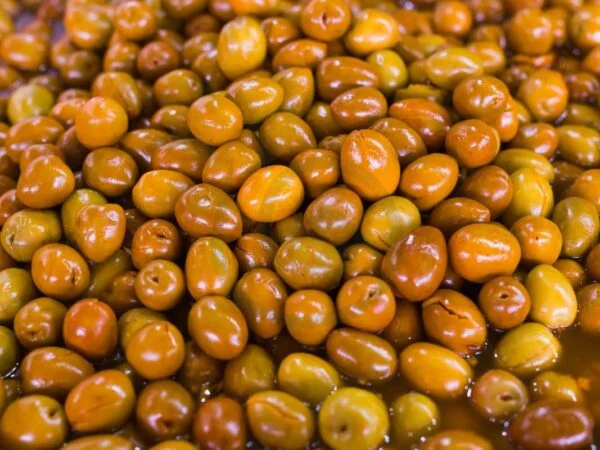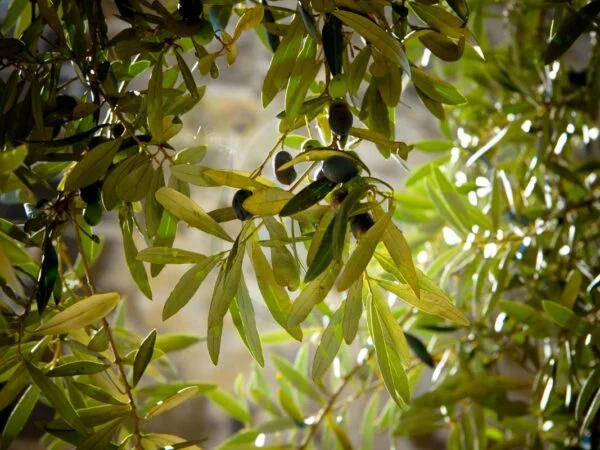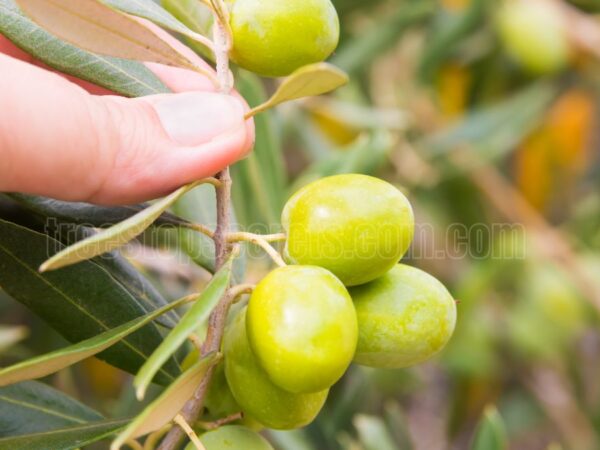Did you know that olives have been cultivated for over 6,000 years? Picking olives from the tree may seem like a daunting task, but with the right techniques, it can be a rewarding experience. In this post, we will explore how to efficiently pick olives by hand from the tree. From choosing the perfect ripeness to using the correct tools, we've got you covered. Whether you're a seasoned olive picker or just starting out, these tips will help you make the most of your harvest.
Key Takeaways
-
Prepare Properly: Before picking olives, ensure you have the necessary tools and containers ready to streamline the process.
-
Gentle Harvesting: Use gentle techniques like hand-picking or using a small rake to avoid damaging the olives and the tree.
-
Sort Carefully: After picking, sort the olives based on ripeness and quality to ensure a better end product.
-
Patience in Curing: Allow the curing process of the fruit to take its time, as it is crucial for developing the olives' flavor.
-
Consider Olive Oil: Explore the option of making your own olive oil if you have a abundant harvest of ripe olives, as it can be a rewarding process.
-
Health Benefits: Remember that olives are not only delicious but also packed with nutrients like healthy fats and antioxidants.
Understanding Olive Harvesting
Olive Tree Cycle
Olive trees follow a cycle that involves flowering, fruiting, and dormancy. This cycle spans several years before the tree begins producing olives. Knowing these stages is vital for successful harvesting. For instance, during the flowering stage, olive trees develop small blooms that eventually turn into olives.
Understanding the life cycle of an olive tree helps in planning for a fruitful harvest season. By recognizing when the olive tree transitions from one stage to another, farmers can anticipate when to expect blossoms and subsequently ripe fruits ready for picking. This knowledge allows them to prepare adequately for each phase of the tree's growth.
Best Harvest Time
The ideal time to pick olives depends on their intended use—whether they are destined for oil production or as table olives. Early harvesting is preferred if the goal is to extract oil from the fruits since they contain higher levels of beneficial compounds at this stage compared to later in their maturation process. Conversely, waiting longer before picking results in better-tasting table olives.
Factors like color, size, and taste significantly impact determining when it's best to harvest olives from trees. Farmers assess these characteristics carefully before deciding on the optimal moment to begin gathering ripe fruits from their orchards.
Pollination and Fruiting
While olive trees are self-pollinating plants, cross-pollination can enhance fruit set and quality significantly. Bees and wind play crucial roles in pollinating olive flowers by carrying pollen grains between different flowers on an individual tree or even between neighboring trees within an orchard.
Understanding how pollination occurs aids farmers in ensuring a successful harvest by promoting fruit development through effective fertilization processes within each flower present on an olive tree.
Preparing for Olive Picking
Necessary Equipment
When picking olives from the tree, it's crucial to have the right tools. Rakes, nets, buckets, and ladders are essential for a successful harvest. Having pruning shears or handpicks can be handy when reaching branches that are hard to access.
Efficiency and safety during olive picking are ensured with proper equipment. For instance, using a sturdy ladder helps in reaching higher branches safely while minimizing the risk of falls. By having all necessary tools ready, you can streamline the harvesting process and make it more manageable.
- Essential equipment: rakes, nets, buckets
- Helpful tools: pruning shears or handpicks
- Ensures efficiency and safety during harvesting
Safety Measures
Safety should always be a top priority when harvesting olives. Wearing protective gloves is vital to shield your hands from thorns or sharp branches that may cause injuries. Moreover, using stable ladders with proper stability precautions reduces the chances of accidents while working at heights.
Being aware of potential hazards like uneven terrain or slippery surfaces is crucial when picking olives. Taking necessary safety measures such as wearing appropriate clothing and footwear further minimizes risks during the harvesting process.
Techniques for Picking Olives
Hand Harvesting
Hand harvesting olives involves a few simple tips and tricks. First, gently shake the branches to loosen ripe olives before using any tools. Placing a tarp or net under the tree can make collecting fallen olives easier. When picking, applying slight pressure to the olives can help determine their ripeness.
For hand harvesting, there are no machines involved; it's just you and nature working together! By following these tips and tricks, you can ensure that your freshly picked olives are of top quality.
Mechanical Harvesting
Mechanical harvesting offers both pros and cons. On the positive side, freshly picked olives provide superior flavor and quality compared to store-bought ones. However, on the downside, olive harvesting with machines can be time-consuming and physically demanding.
Understanding these pros and cons is crucial in deciding whether handpicking or mechanical methods suit your preferences better.
Sorting and Storing Olives
Sorting Techniques
The process involves categorizing them based on size, color, and quality. This step is crucial as it ensures a consistent final product. Manual sorting allows for a detailed examination of each olive, while mechanical sorting offers efficiency by quickly separating olives based on predetermined criteria. The choice between these techniques depends on factors like the scale of harvest and the desired outcome. For small batches or artisanal production, manual sorting might be preferred for its precision, whereas large-scale operations often opt for mechanical sorting due to its speed.
Different storage solutions are available once you have picked your olives from the tree. Storing freshly picked olives in a cool place with proper ventilation helps maintain their quality by slowing down ripening processes. Utilizing food-grade containers or jars that are airtight is essential to prevent spoilage caused by exposure to air or contaminants. Depending on personal preference and intended use, various methods such as brining or fermenting can be employed for long-term storage solutions.
Storage Solutions
For storing freshly picked olives after harvesting from the tree, consider using different methods like brining or fermenting based on your preferences and requirements. Brining involves soaking olives in saltwater solution which not only preserves them but also enhances their flavor over time through fermentation processes.
- Brined olives develop complex flavors over weeks/months.
- Fermenting requires submerging ripe olives in water for several months until they naturally ferment into edible treats.
Whether you choose brining or fermenting as your preferred method of preservation depends largely on taste preferences and how patient you are willing to be during the waiting period.
Curing Process for Olives
Basic Steps
Inspect the tree to ensure you pick only ripe olives, crucial for quality curing. Place nets or tarps beneath the tree before picking to collect falling olives. Gently use appropriate tools to pluck olives from branches without causing damage.
Curing Methods vary and include water, brine, or dry curing techniques. Each method demands distinct ingredients and durations for desired flavors. Exploring different methods allows discovering personal preferences in cured olives.
Curing Techniques
Water curing involves soaking olives in water, changing it daily over a few weeks to eliminate bitterness gradually. Brine curing requires submerging olives in a saltwater solution with spices for several months until ready. Dry-curing entails coating olives with salt or drying them under the sun or in an oven.
Trying various methods helps determine which flavor profile suits your taste buds best when preparing cured olives at home. Experimenting with different ingredients like herbs, garlic, lemon zest can enhance flavors uniquely.
Olive Oil Production
Milling Process
Milling is a crucial step in olive oil production where olives are crushed into a paste. Modern mills use stainless steel machinery for hygiene and efficiency. The quality of olive oil produced heavily relies on the milling process.
The milling process ensures that the olive paste is extracted efficiently to obtain high-quality oil or olive paste. Stainless steel machinery in modern mills guarantees cleanliness, preventing contamination. This stage significantly impacts the flavor and aroma of the final product.
Oil Extraction
Oil extraction can be achieved through traditional press systems or modern centrifugation methods. Cold pressing yields superior quality olive oil with low acidity levels, preserving its nutritional value and taste profile. Understanding this extraction process helps consumers appreciate the effort involved in producing premium-grade olive oil.
Traditional press systems have been used for centuries to extract olive oil, utilizing pressure to separate the oil from the paste manually. On the other hand, modern centrifugation methods involve spinning at high speeds to separate components based on density differences effectively.
Nutritional Value of Olives
Health Benefits
Olives offer numerous health benefits. They are packed with antioxidants, which help protect the body from damage caused by harmful molecules known as free radicals. These antioxidants can contribute to improved heart health and reduced inflammation in the body. Olives contain healthy fats that are essential for overall well-being. Vitamins A and E found in olives play a crucial role in supporting various bodily functions.
Incorporating olives into your diet can be a simple way to boost your health. Whether enjoying them as a snack or adding them to salads, pasta dishes, or pizzas, these versatile fruits provide an array of nutrients that support optimal wellness.
Culinary Uses
Olives shine brightly due to their versatility and unique flavor profile. From Mediterranean cuisine to international dishes, olives are a staple ingredient that adds depth and richness to various recipes. Their tangy taste elevates the flavors of salads, giving them an extra kick.
Exploring different ways to incorporate olives into your meals can enhance your dining experience significantly. Try experimenting with olive tapenade on crostini or using sliced olives as a topping for homemade pizza - the possibilities are endless!
Foraging for Olives
Legal Considerations
Before embarking on harvesting olives from trees, it's crucial to be aware of the legal aspects surrounding this activity. Familiarize yourself with local regulations governing olive tree ownership and harvesting rights. Some regions have specific rules pertaining to commercial olive production or protected varieties, so understanding these guidelines is essential. By adhering to legal considerations, you ensure compliance and avoid potential penalties that may arise from unauthorized harvesting activities.
To pick olives responsibly, it's important to recognize wild olive trees by their distinctive silver-gray leaves and small fruit size. When selecting ripe olives, ensure they are ready for harvest by checking their color; green olives typically turn purple or black when ripe. Harvesting wild olives should be done conscientiously, taking into account their ecological significance in the local ecosystem. Researching local regulations on foraging before collecting wild olives can provide valuable insights into any restrictions or guidelines in place.
Foraging Tips
When venturing out to gather olives from trees, keep in mind the importance of sustainable practices. Avoid damaging the tree while picking by using gentle techniques such as handpicking instead of shaking branches vigorously. Prioritize gathering ripe fruits over unripe ones since they will yield better flavor and oil content during processing.
Remember that not all types of black olives start off as black; some varieties like Kalamata initially appear green before ripening fully into a dark hue suitable for consumption or preservation. Taking note of these distinctions can help you identify the optimal time for harvesting based on your preferences for taste and texture.
1- Bullet list:
- Recognize wild olive trees by their distinctive features.
- Check ripeness based on color changes in green olives.
- Prioritize sustainability when harvesting wild olives.
2- Bullet list:
- Familiarize yourself with local regulations regarding olive tree ownership.
- Identify ripe fruits based on color variations in different types of black olives.
Reader Success Stories
First-hand Experiences
Sharing personal stories about how to pick olives from the tree adds authenticity and engages readers. Describing challenges faced during olive picking adventures provides valuable insights for those interested in this activity. For instance, recounting a time when a reader learned the importance of using proper tools while harvesting olives can be both informative and entertaining.
First-hand experiences also allow individuals to share lessons learned during the olive picking process. Readers may find inspiration in stories where someone overcame difficulties like unpredictable weather conditions or challenging terrain while gathering olives. These narratives not only entertain but also educate, offering practical advice on what to expect when venturing into an olive grove.
Tips from Veterans
Seeking advice from experienced olive pickers is invaluable for anyone looking to learn how to harvest olives effectively. Veterans can offer essential tips on various aspects of olive picking, such as determining the right time for harvesting, selecting appropriate equipment like rakes or hand-held harvesters, and mastering storage techniques for freshly picked olives. By learning from seasoned experts, novices can enhance their success rate in gathering olives.
Veterans' wisdom can shed light on common pitfalls to avoid during the harvest season and provide guidance on optimizing efficiency while collecting olives from trees. Their expertise may include insider knowledge on identifying ripe fruits, ensuring minimal damage during picking, and preserving the quality of harvested olives until processing or consumption. Incorporating these tips into one's olive picking routine can significantly improve outcomes.
You've learned the ins and outs of olive picking, from understanding the harvesting process to the nutritional benefits of these little powerhouses. Now, armed with techniques for picking, sorting, and storing olives, you're ready to embark on your own olive-picking adventure. Remember, it's not just about the fruit; it's about connecting with nature and savoring the fruits of your labor.
So, grab your baskets and head out to pick some olives - who knows, you might just discover a newfound appreciation for these versatile gems! Happy picking!
Frequently Asked Questions
How long does it take for olives to ripen on the tree?
It typically takes 6-8 months for olives to ripen on the tree. Factors like olive variety, climate, and care influence the ripening time.
What is the best time of year to pick olives from the tree?
The best time to pick olives is usually in late autumn or early winter when they are fully ripe. This period ensures optimal flavor and oil content.
Do I need any special tools for picking olives from the tree?
Yes, you may need tools like hand rakes, harvesting combs, or small handheld harvesters to efficiently gather olives without damaging the branches.
How should I store freshly picked olives before processing them further?
Store freshly picked olives in a cool place away from direct sunlight. You can keep them in well-ventilated containers or bags until you're ready to start processing them.
Can I eat fresh-picked olives right off the tree?
Freshly picked raw olives are very bitter due to oleuropein content. They require curing processes like brining or fermentation before consumption to reduce bitterness and improve flavor.
Image Source: Paid image from CANVA




